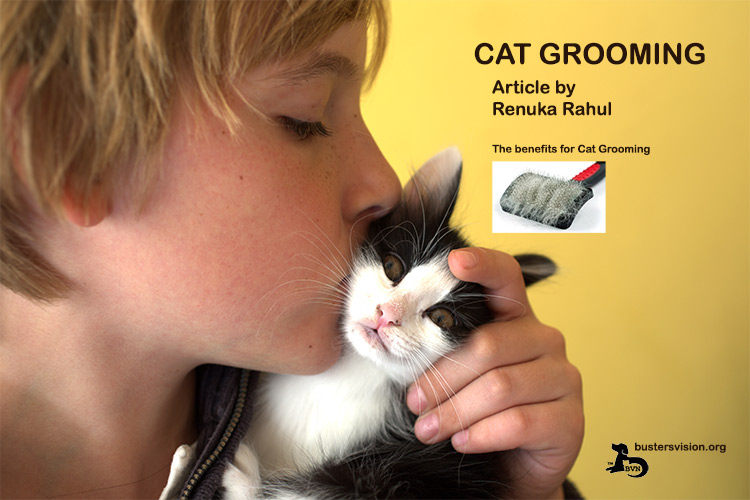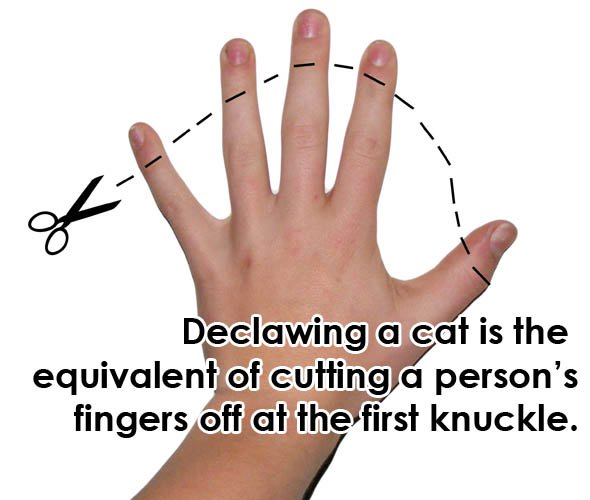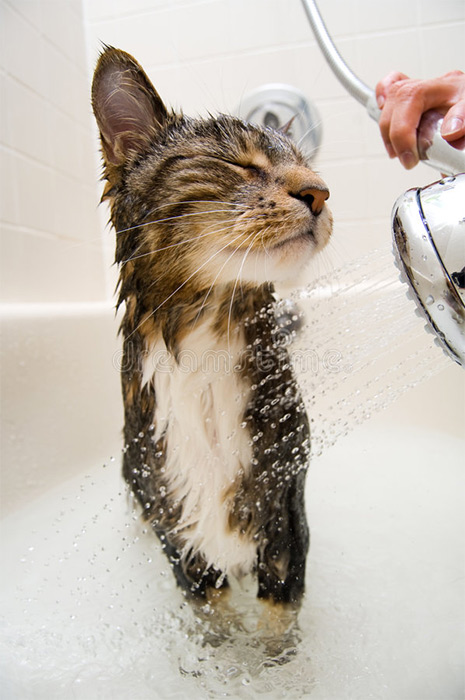cat grooming cat dental care
Buster’s Vision Education Tool
Cat Grooming
By Renuka Rahul, “Adopt the innocent ones, understand the meaning of true love!”
Editor, Anne Marie Powless
December 22, 2017

Share this Post
Cats are fluffy, independent and affectionate, and they require much less attention than dogs and often keep to themselves.
Even though you may not realize it, your pet cats are making your life more beautiful and happier. No matter what breed your kitty is, you want to take the best care of him or her.
Cat grooming and cat dental care are more than just keeping your cat looking good. Grooming your cat on a regular basis will also help you to keep an eye on her health. See how to keep your kitty’s eyes, ears, teeth, skin, and fur healthy and clean.
Please note: Many kitties do not tolerate grooming and dental care. If your cat fights the process, and there is some potential that injury could occur to your cat or yourself, please make an appointment with a professional groomer or a veterinarian to help groom your cat.
Start Slowly
Don’t grab your little kitty one day and start grooming her. It might not end on a happy note.
Instead, slowly accustom your kitty to grooming.
Pick a time when your kitty is relaxed and content – after eating, perhaps. Then start with short grooming sessions of maybe 5 to 10 minutes. Pet and praise your kitty as you’re grooming her, and maybe even offer a treat at the end of the session. Slowly extend grooming time until kitty is comfortable.
Cat Brushing
Regular brushing offers benefits such as removing dead hair and dirt and removing or preventing mats and tangles.
Before you brush your cat you’ll have to remove any mats that have developed. Don’t pull her skin. Otherwise, she may end up hating grooming time! But this is not as easy as it sounds!
- Short-haired cats: Brush twice a week. With a metal comb, work the brush through your cat’s fur from head to tail to remove dirt and debris. Brush all over her body in the direction in which the coat grows. Use a bristle or soft rubber brush to remove loose hair.
- Long-haired cats: Brush every day. Use a wide-toothed comb to remove debris from kitty’s coat. Start with her abdomen and legs, gently comb the fur upward toward her head. You can sprinkle talcum powder over knots and gently use your fingers to tease them apart. If the knots don’t come out by hand, try using a mat-splitter. Next, use a wire brush or a bristle brush to remove loose hair.
- During your weekly grooming sessions, run your hands along your cat’s body, checking for wounds, bumps and hidden tangles.
- Neglecting to brush your kitty’s coat can lead to painful tangles and a bellyful of hairballs.
Cat Trimming
- The best time to trim your cat’s nails is when she’s relaxed and even sleepy, such as in her groggy, after-meal state.
- Begin by massaging your cat’s paws between your fingers for no longer than 3 seconds. Give her pad a little press so that the nail extends out, then release her paw and immediately give her a treat. Do this every day. Most kitties love massages.
- Once the cat is comfortable with the massaging, it’s time to clip. Use a quality, sharp clipper or nail scissors specifically designed for use on cats.
- Keep treats ready with you before starting trimming.
- Cut parallel to the flat of the claw, and clip off ONLY the white tip. Now release her toe and quickly give her a treat.
- The pink part of a cat’s nail, called the quick, is where the nerves and blood vessels are. Do NOT cut this sensitive area.
- If your cat resists, don’t raise your voice or punish her. Never chip nails with an agitated or upset kitty.
DON’T TRY TO TRIM ALL OF YOUR CAT’S CLAWS AT A TIME. PLEASE TAKE EXTRA CARE IF YOU DECLAW YOUR KITTY’S CLAWS.

Cat Bathing
If you have a cat, you already know they are natural groomers. With her built-in grooming tools (tongue and teeth), your fastidious feline is well-equipped to tackle her own hair care needs. But if she gets very dirty or gets into something sticky or smelly, she could use a bit of help with a good bath.
Let us give you some tips on making bath times pleasant for both you and your kitty.
- Please do your cat’s nail trimming before bath time. No one likes to get hurt at bath time.
- Water should be warm. Not too cold, not too hot.
- Use special shampoo for cats.
- Place a rubber bath mat in the sink or tub where you’ll be bathing your kitty so she doesn’t slip.
- Fill the tub to with just 3 or 4 inches water.
- Gently pour water directly on your kitty’s head, but DO NOT spray water directly on the kitty’s head. If you don’t have a spray hose, use an unbreakable pitcher to wash body.
- Start at the cat’s head, and gently work in the shampoo from head to tail.
- Rinse gently but thoroughly, making sure that all the shampoo is rinsed out. Again, be sure to avoid spraying directly on your cat’s head.
- Gently pat dry with a large towel.

- First get your cat used to the idea of having her teeth brushed. Start by gently massaging her gums with your fingers or touching a cotton swab to them.
- After a few sessions, put a little bit of cat-formulated toothpaste on her lips to get her used to the taste.
- Introduce a toothbrush designed especially for cats—it will be smaller than a human toothbrush and will have softer bristles. Toothbrushes that you can wear over your finger are also available and allow you to massage to your cat’s gums.
- Apply the toothpaste to her teeth for a gentle brushing.
Cats are comparatively independent creatures. They love grooming themselves. But like all of us, your cat could use a helping hand every now and then with brushing teeth. Keep your cat happy and clean.
